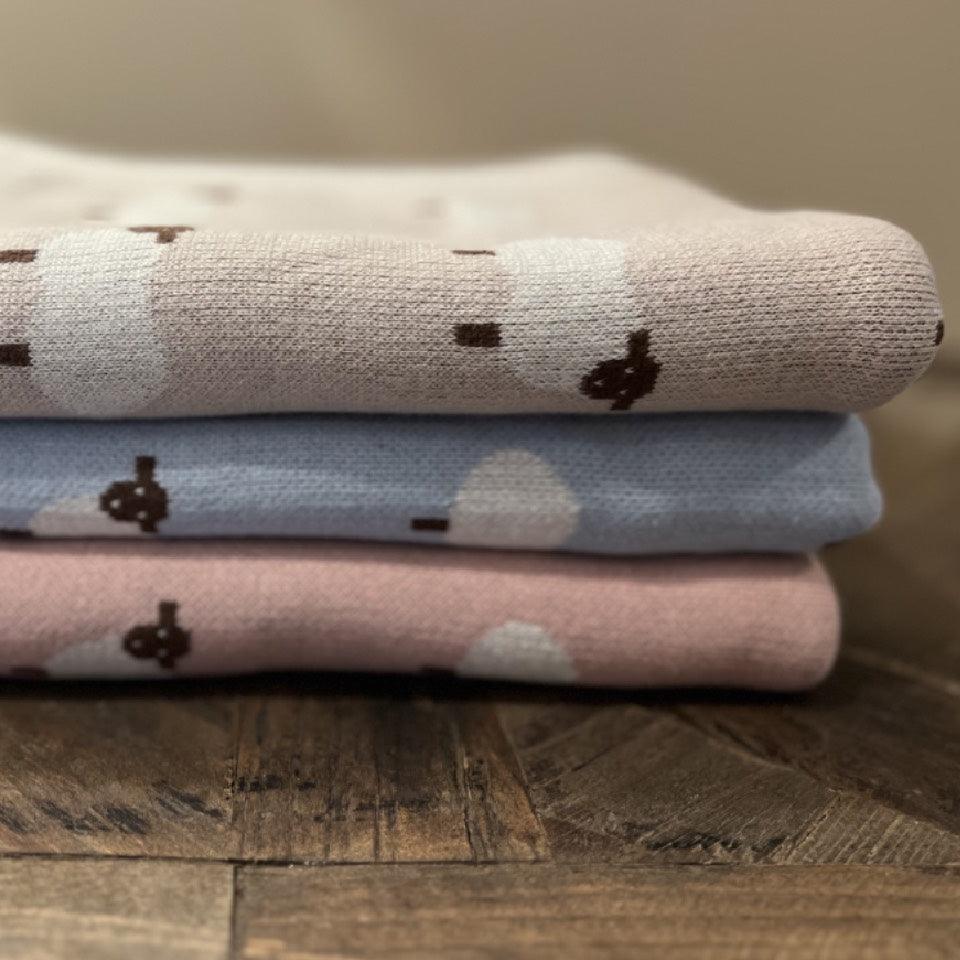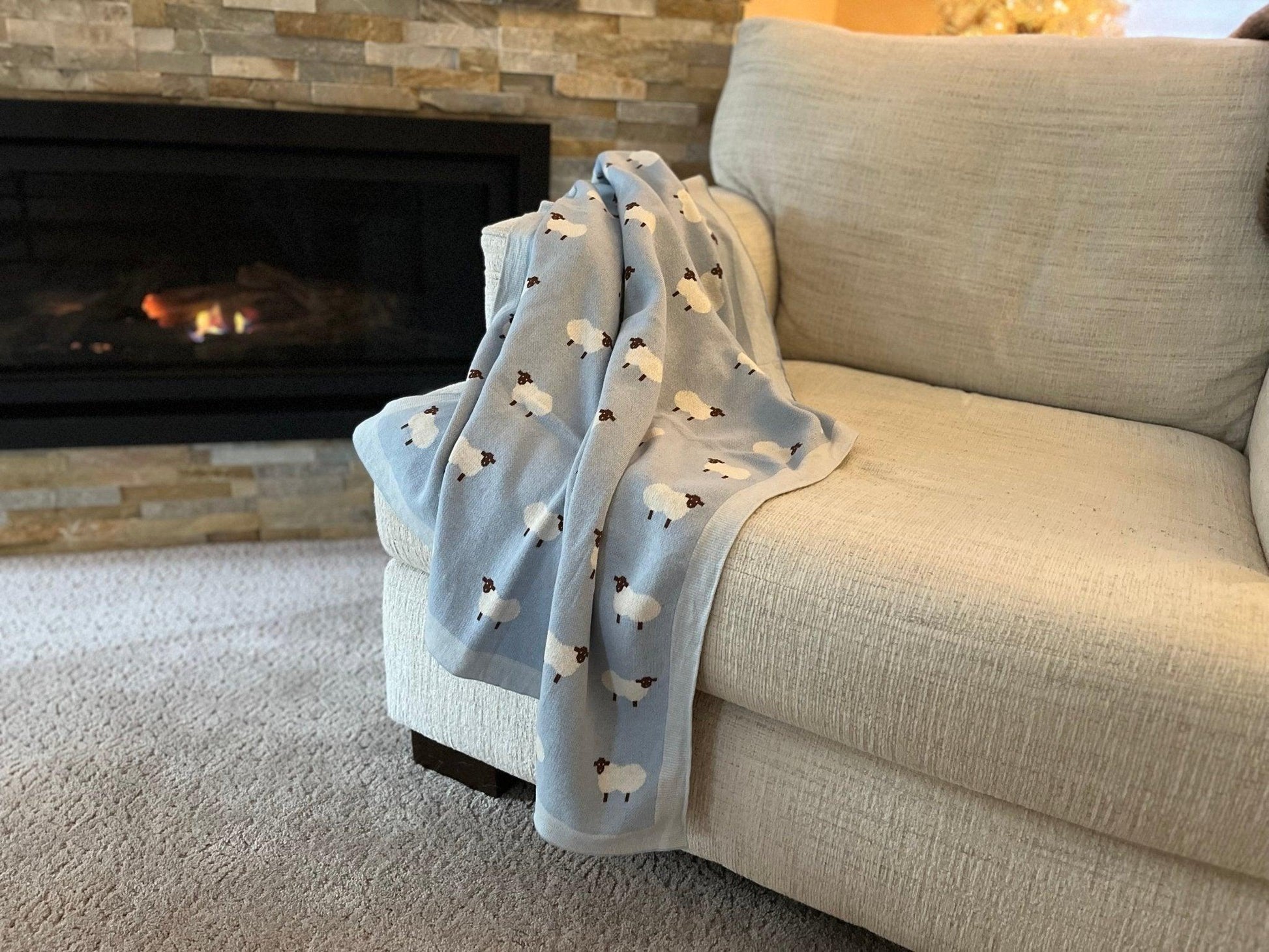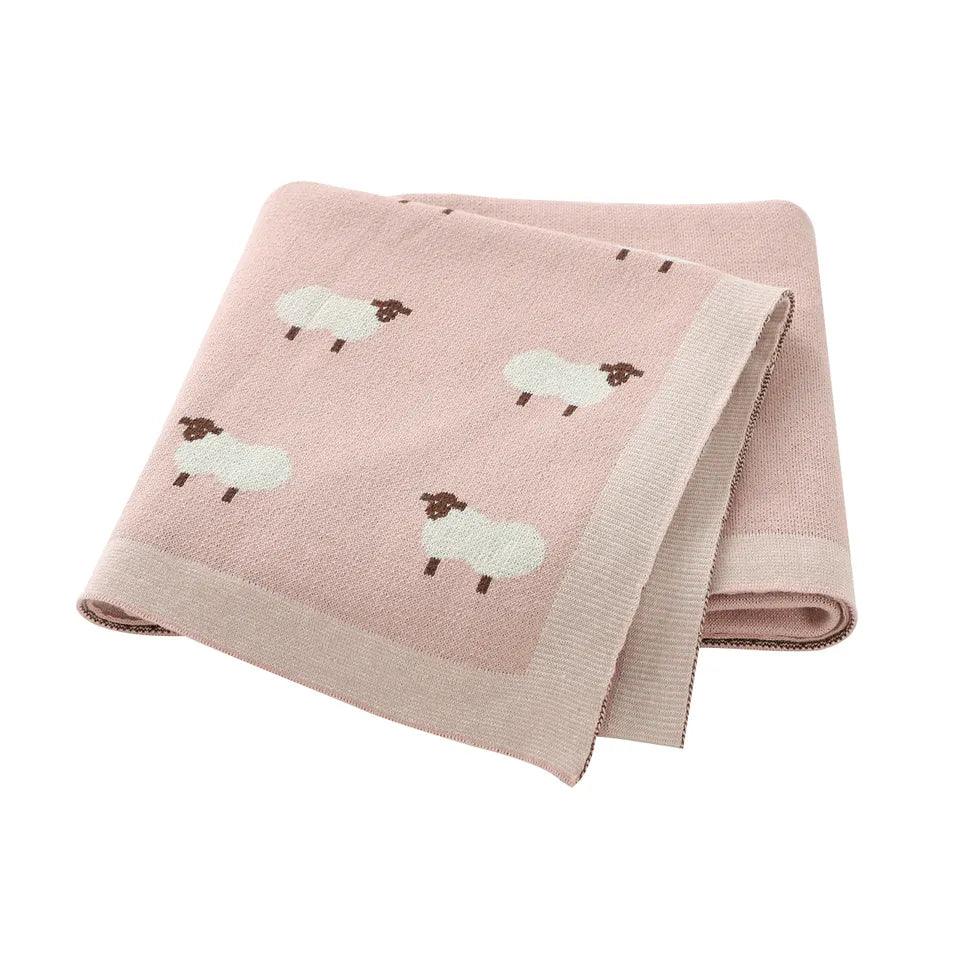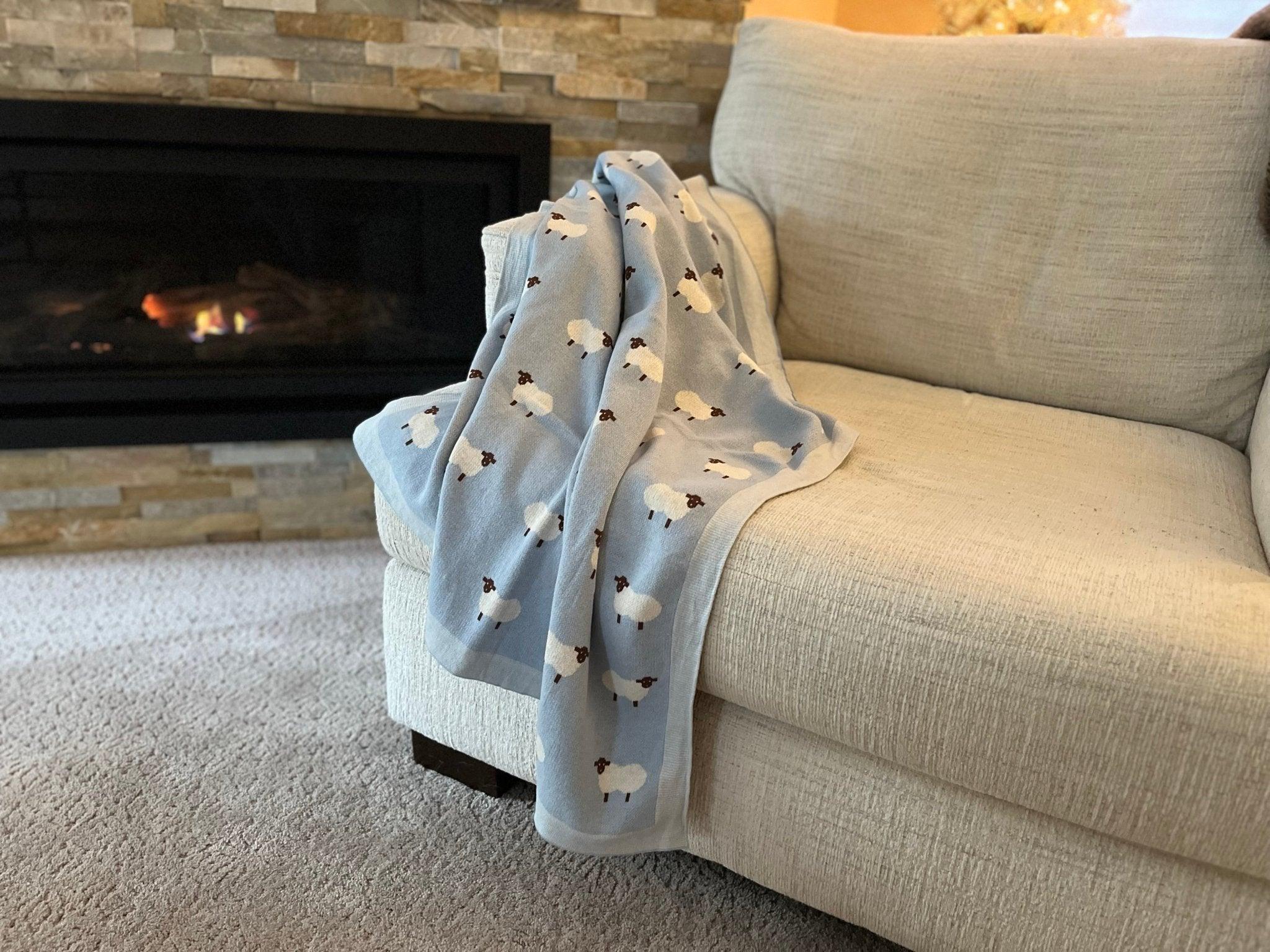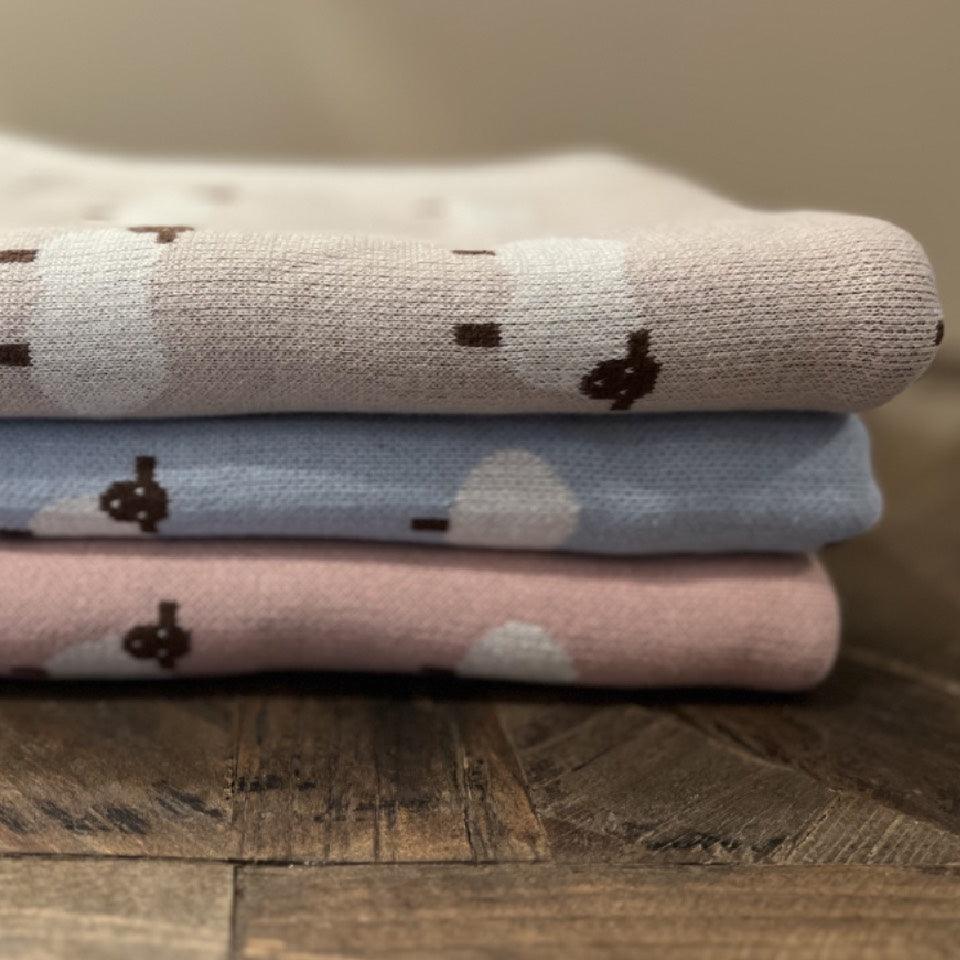Sheep Baby Blanket
Sheep Baby Blanket
Couldn't load pickup availability
Snuggle your baby in the softest sheep baby blanket. Our top-rated lamb baby blankets or blankies provide comfort and warmth for your newborn. Perfect as a baby shower gift, nursery essential, or everyday cuddle companion. Shop the best baby blankets now!
Bundle your little one up with a flock of adorable fleecy sheep and the cozy comfort of organic cotton. The jersey knit offers a super-soft feel and ideal warmth for swaddling or strolling.
DETAILS
- Made of 100% yarn-dyed organic cotton knit.
- Yarn-dyed fiber holds its vibrancy over time.
- Machine wash.
- Imported.
DIMENSIONS FOR Sheep Baby Blanket | Best Lamb Baby Blanket or Blankie for Newborns
- Blanket: 32" wide x 40" long
CARE
- Machine wash warm; gentle cycle.
- Use only non-chlorine bleach, if needed.
- Lay flat to dry.
- Cool iron; if necessary.
- DO NOT dry clean.
Personalization not available for this item.
If you're searching for the best baby sheep blanket for newborns, look no further! Our collection includes the softest and most organic wool sheep baby blanket options, perfect for keeping your little one cozy. Whether you're looking for sheep-themed baby blankets for nursery, we've got something special for every taste. Our baby sheep blanket for swaddling is ideal for wrapping your newborn snugly, while our sheep baby blankie for toddlers provides warmth as they grow. For those seeking something unique, try our custom lamb and sheep baby blankets, made with love and care. You’ll also find an array of affordable baby sheep blankets for gifts that won’t break the bank. Our products include everything from sheep and lamb baby blankets for crib to eco-friendly baby sheep blanket materials, ensuring you have sustainable options. With cute sheep print baby blankets for girls or boys and soft fleece baby sheep blankets, your nursery will look adorable while your baby stays warm. If you’re looking for something extra special, our luxury lamb baby blanket for newborns is the perfect addition to your baby’s bedding collection.


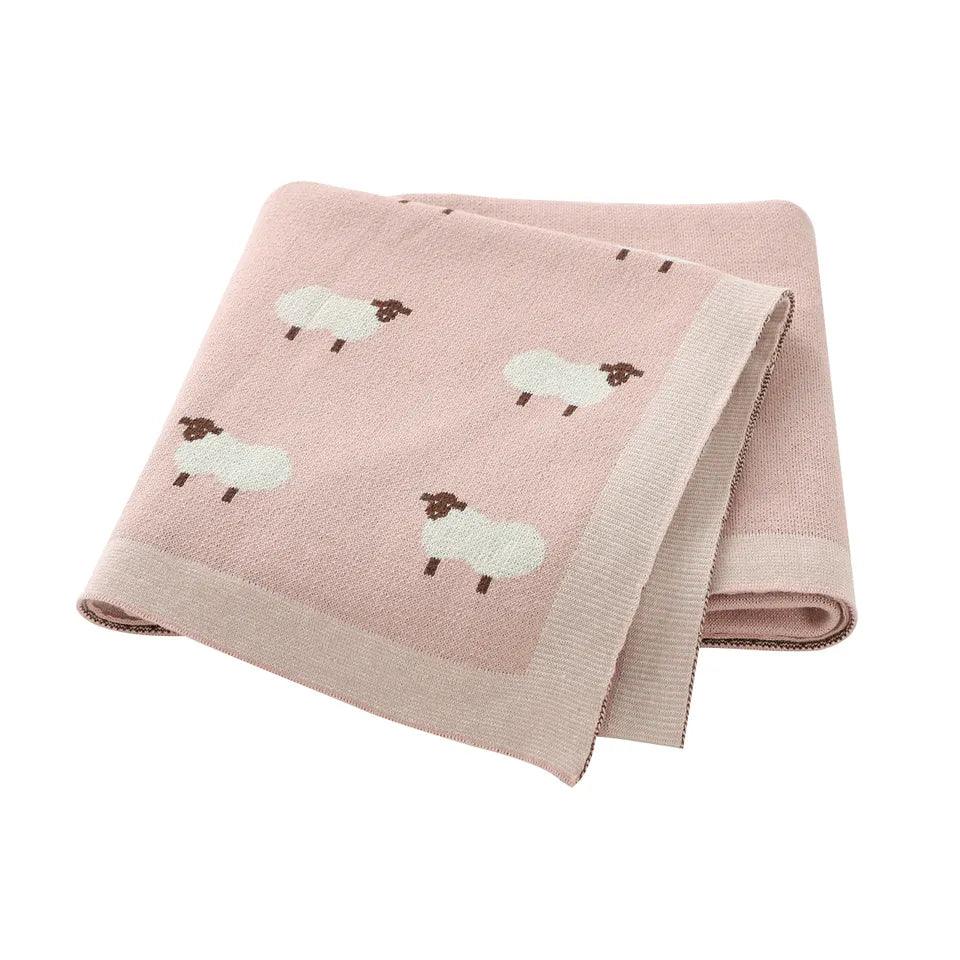

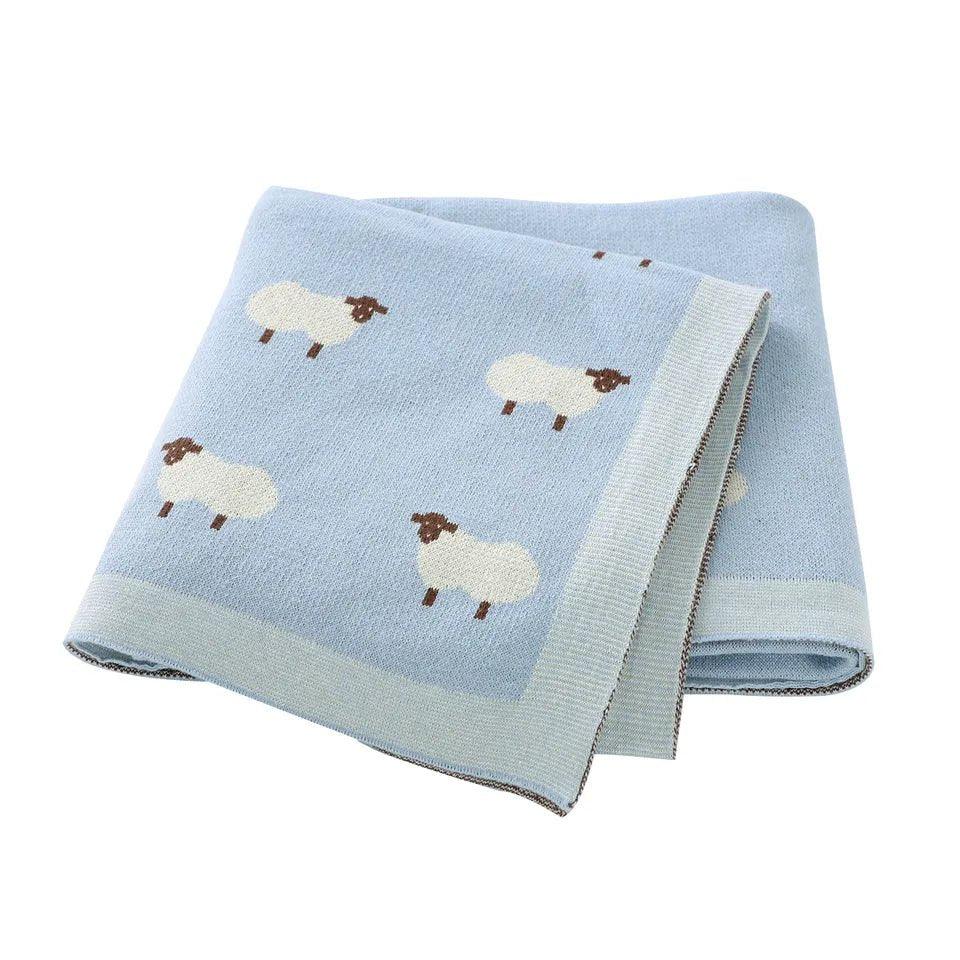
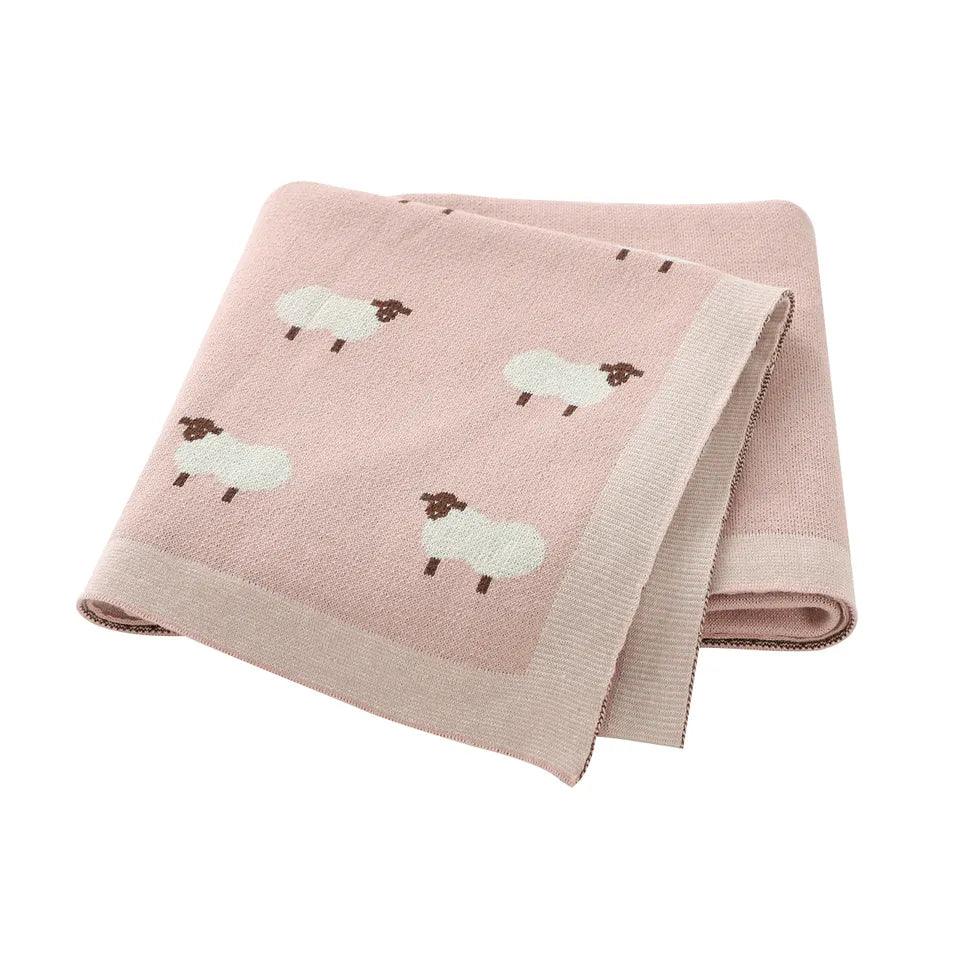
Sheep Baby Blankets
Collapsible content
Sheep Blanket Insights: A Comprehensive Research on Baby Blankets and Their Multifaceted Importance
Introduction To Sheep Blanket
Baby blankets, or even sheep baby blanket, often overlooked as mere accessories, play a pivotal role in the early stages of an infant's life. These soft pieces of fabric, whether passed down through generations or freshly purchased, are more than just a decorative item in a baby's nursery. They serve as a symbol of warmth, comfort, and security, providing an environment that mimics the mother's womb. As we delve deeper into the world of baby blankets, we'll uncover their significance, historical roots, and the multifaceted purposes they serve.
Brief Overview of the Importance of Sheep Baby Blankets
Baby sheep blanket or even lamb blanket have been an integral part of child-rearing for centuries. Their primary importance lies in their ability to provide warmth and comfort to a newborn. The soft texture and snugness of a blanket can significantly reduce an infant's stress, making them feel safe and secure in their new environment. Moreover, these blankets act as a protective barrier against external factors, ensuring that the baby remains cozy and shielded. Over the years, the significance of baby blankets has transcended their primary function, becoming a keepsake for many families, symbolizing memories, love, and a sense of belonging.
Historical Context of Baby Lamb Blankets and Covers
Tracing back through history, baby blankets and covers have always held a special place in various cultures. Ancient civilizations, such as the Egyptians, wrapped their infants in swaddling bands, which were cloth strips that kept the baby's limbs restricted and provided warmth. In Native American cultures, babies were often wrapped in soft animal hides or woven fabrics. As time progressed, the materials and designs evolved, but the essence remained the same—to provide warmth, protection, and comfort just like a lamb blanket. These historical practices highlight the universal acknowledgment of the importance of baby blankets in nurturing and child-rearing.
Purpose of Baby Blankets
The primary purpose of sheep fleece blanket extends beyond just warmth. They are intricately woven fabrics of love, care, and security, designed to cater to an infant's varied needs.
Lamb Blanket or Sheep Blanket or Any Blanket Can Provide Comfort and Security for Infants
For a newborn, the world outside the womb is vast, unfamiliar, and often overwhelming. Baby blankets serve as a bridge between these two worlds. The softness of the fabric, combined with the snugness it provides, replicates the comfort of the womb. This familiarity induces a sense of security in infants, making them feel safe and loved. Many babies form a deep attachment to their blankets, turning to them for comfort during times of distress or unfamiliarity.
Protection from Environmental Factors
Baby blankets act as a shield, protecting infants from various environmental factors. Whether it's the harshness of winter, the intensity of summer, or the unpredictability of the monsoons, a well-chosen baby blanket ensures that the baby remains protected. The fabric acts as an insulator, maintaining the baby's body temperature and ensuring they are neither too hot nor too cold. Additionally, when outdoors, blankets protect the baby from harmful UV rays, dust, and other potential irritants.
Aids in Sleep Regulation
Sleep is crucial for an infant's growth and development. Baby blankets play a significant role in ensuring that babies get their required rest. The snugness of a blanket provides a cocoon-like environment, which is conducive to sleep. The rhythmic rise and fall of a baby's chest against the soft fabric can mimic the sensation of being rocked, lulling them into a deep slumber. Furthermore, the consistent warmth and comfort provided by the blanket ensure that the baby's sleep is uninterrupted, aiding in their overall well-being.
Types of Baby Blankets
Swaddling Blankets
Swaddling blankets have been used for centuries across various cultures to wrap newborns tightly, mimicking the confinement of the womb. This type of blanket is typically square or rectangular and made of lightweight, breathable material. Swaddling helps soothe fussy babies, reduces the risk of the startle reflex waking them up, and can even improve the quality of their sleep. Proper swaddling ensures that the baby's hips and legs can move freely, reducing the risk of hip dysplasia. Over time, with the evolution of design and materials, modern swaddling blankets often come with Velcro or snap closures to make the process easier for parents.
Receiving Blankets
Receiving blankets are versatile, multi-purpose blankets that are often the first to wrap a baby after birth. Made of soft, lightweight material, they are perfect for various tasks, from swaddling to burping or even as a makeshift diaper in emergencies. Their name originates from the act of "receiving" the baby into the world, and they continue to be a staple in any newborn's arsenal due to their functionality and simplicity.
Security Blankets
Security blankets, often smaller in size and sometimes equipped with a plush toy or a soft corner, play a significant role in a child's emotional development. As babies grow, they might form an attachment to this blanket, turning to it for comfort during times of stress, separation, or change. This attachment object can help toddlers navigate their expanding world while having a piece of consistent comfort with them.
Crib Blankets
Crib blankets are designed specifically to fit the dimensions of a baby's crib. They are often thicker than receiving or swaddling blankets, providing warmth during naps or nighttime sleep. As safety is paramount, it's essential to ensure that crib blankets are used appropriately, avoiding any risks associated with Sudden Infant Death Syndrome (SIDS).
Sleep Sacks
Sleep sacks, also known as wearable blankets, are designed to keep babies warm without the risks associated with loose bedding. They are essentially a zippered or buttoned pouch, allowing the baby's arms to be free but keeping their body covered. Sleep sacks have gained popularity as they prevent babies from kicking off their covers, ensuring they remain warm throughout the night.
Materials Used
Cotton
Cotton is a popular choice for baby blankets due to its softness, breathability, and natural origins. It's hypoallergenic, making it suitable for babies with sensitive skin. Cotton blankets are also durable and easy to wash, making them a practical choice for everyday use.
Fleece
Fleece is a synthetic material known for its warmth and soft texture. Fleece blankets are lightweight yet provide excellent insulation, making them perfect for colder climates. They are also quick-drying and can wick away moisture, ensuring the baby remains dry and comfortable.
Wool
Wool is a natural fiber known for its excellent insulation properties. Woolen baby blankets are warm, breathable, and can regulate temperature, ensuring the baby remains comfortable in varying conditions. Additionally, wool has natural moisture-wicking properties and can resist fire without the need for chemical treatments.
Bamboo
Bamboo is an eco-friendly material that's becoming increasingly popular in baby products. Bamboo blankets are soft, breathable, and have natural antibacterial properties. They are also hypoallergenic, making them suitable for babies with allergies or sensitive skin.
Synthetic Materials
Synthetic materials, such as polyester, are commonly used in baby blankets due to their durability and cost-effectiveness. They are resistant to wrinkles, shrinkage, and often have moisture-wicking properties. However, it's essential to ensure that any synthetic material used is free from harmful chemicals or irritants that might harm the baby's delicate skin.
Care and Maintenance
Washing and Drying Recommendations
Baby blankets, given their frequent use, require regular cleaning to ensure they remain hygienic and safe for the infant. When washing baby blankets, it's essential to use a gentle, hypoallergenic detergent to avoid any potential skin irritations. For the first wash, it's advisable to use cold water to set the colors and prevent them from bleeding. Subsequent washes can be at a warm temperature. Always check the care label on the blanket, as different materials have specific washing instructions. For drying, while tumble drying on a low setting is convenient, air drying is the gentlest method and can prolong the life of the blanket. It's also crucial to avoid using fabric softeners or bleach, as they can break down the fibers and introduce chemicals that might not be safe for the baby's skin.
Addressing Wear and Tear
Given their constant use, baby blankets are prone to wear and tear. Regularly inspect the blanket for any loose threads, holes, or fraying edges. If detected early, minor damages can be mended at home using a needle and thread. For blankets that have sentimental value or are heirlooms, consider seeking professional restoration services. It's also a good practice to have multiple blankets in rotation to ensure even wear and prolong the lifespan of each.
Storage Tips
When storing baby blankets, especially those not in regular use, ensure they are clean and completely dry to prevent mold or mildew. Fold them neatly and store them in a cool, dry place. Using vacuum-sealed bags can save space and protect the blankets from dust and pests. For heirloom or special blankets, consider using acid-free tissue paper to wrap them before storing, which can prevent yellowing and preserve the fabric's integrity.
Psychological Aspects
Attachment and Security
From a psychological perspective, baby blankets often serve as more than just tools for warmth. For many infants and toddlers, these blankets become symbols of comfort, security, and familiarity. In unfamiliar or stressful situations, a baby might seek out their favorite blanket as a source of solace. This attachment can be likened to the bond the baby shares with their primary caregivers, offering a sense of security and stability in a constantly changing environment.
Transitional Objects in Child Development
In the realm of child psychology, baby blankets often qualify as "transitional objects." These are items that help a child transition from total dependence on their primary caregivers to a more independent state. As the child grows and begins to explore the world, the transitional object (in this case, the blanket) serves as a constant, providing comfort in the absence of the caregiver. It's a bridge between the familiar and the unfamiliar, helping the child navigate and make sense of new experiences. Over time, as the child becomes more independent, the reliance on the transitional object may decrease, but its importance in the early stages of development is undeniable.

